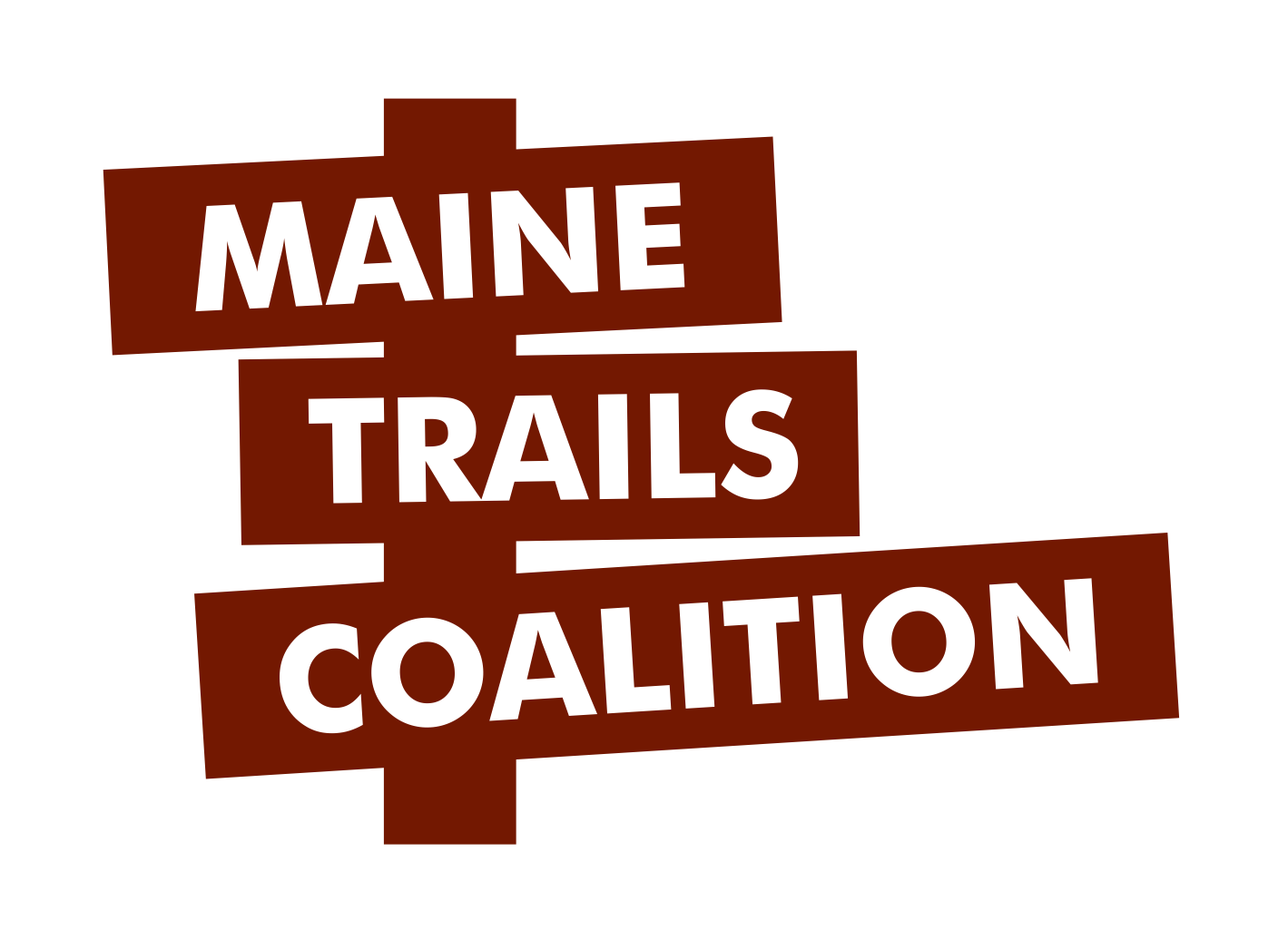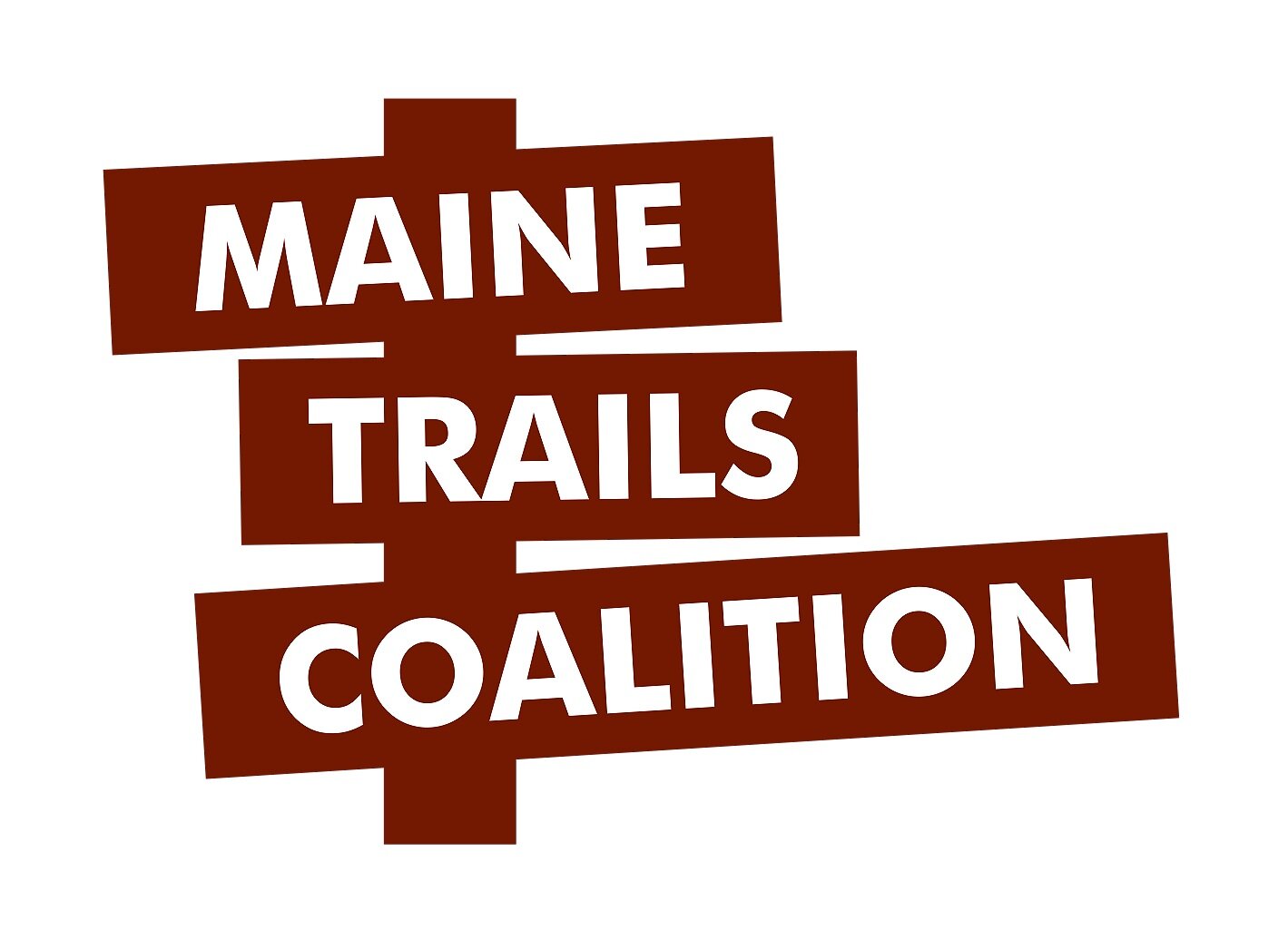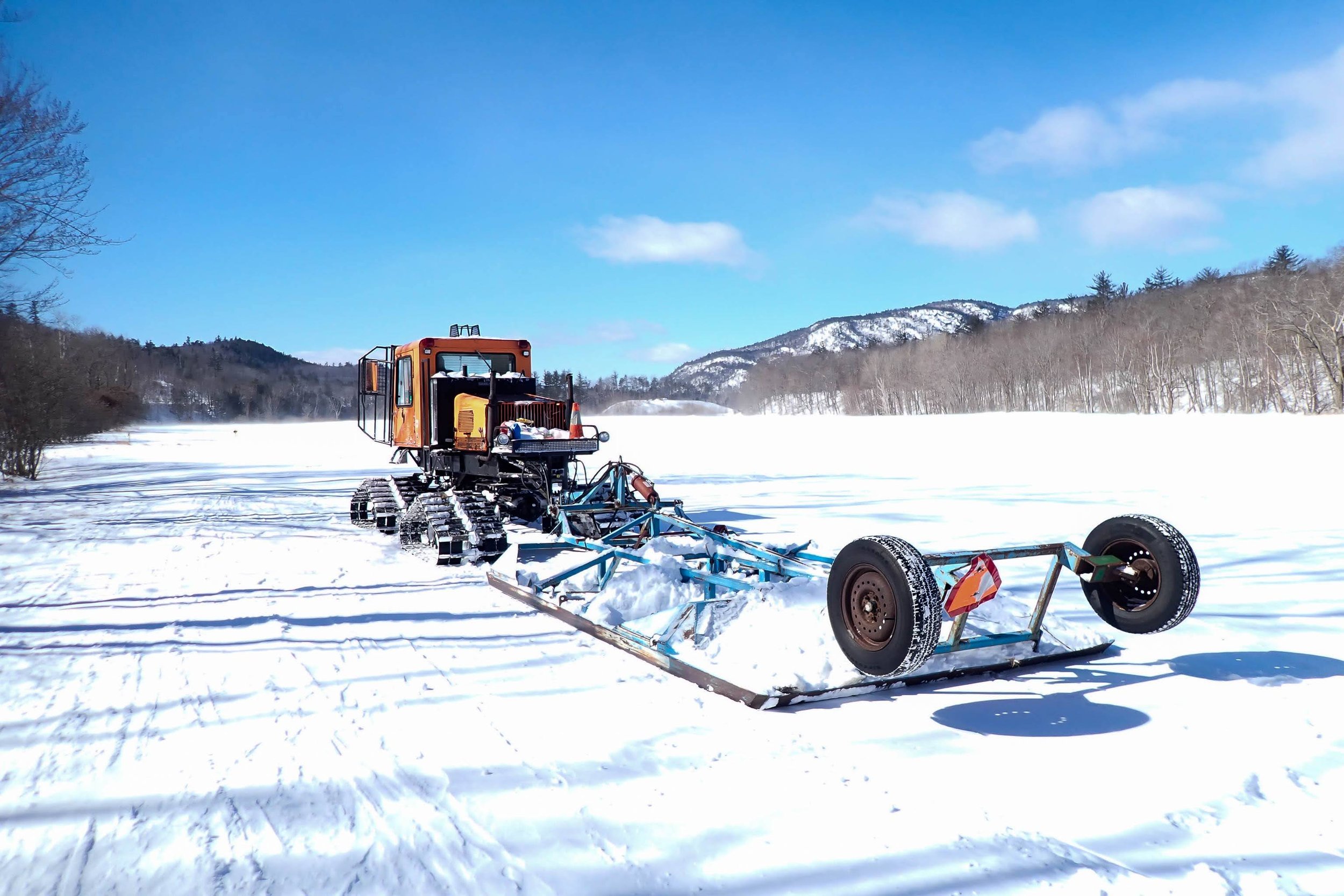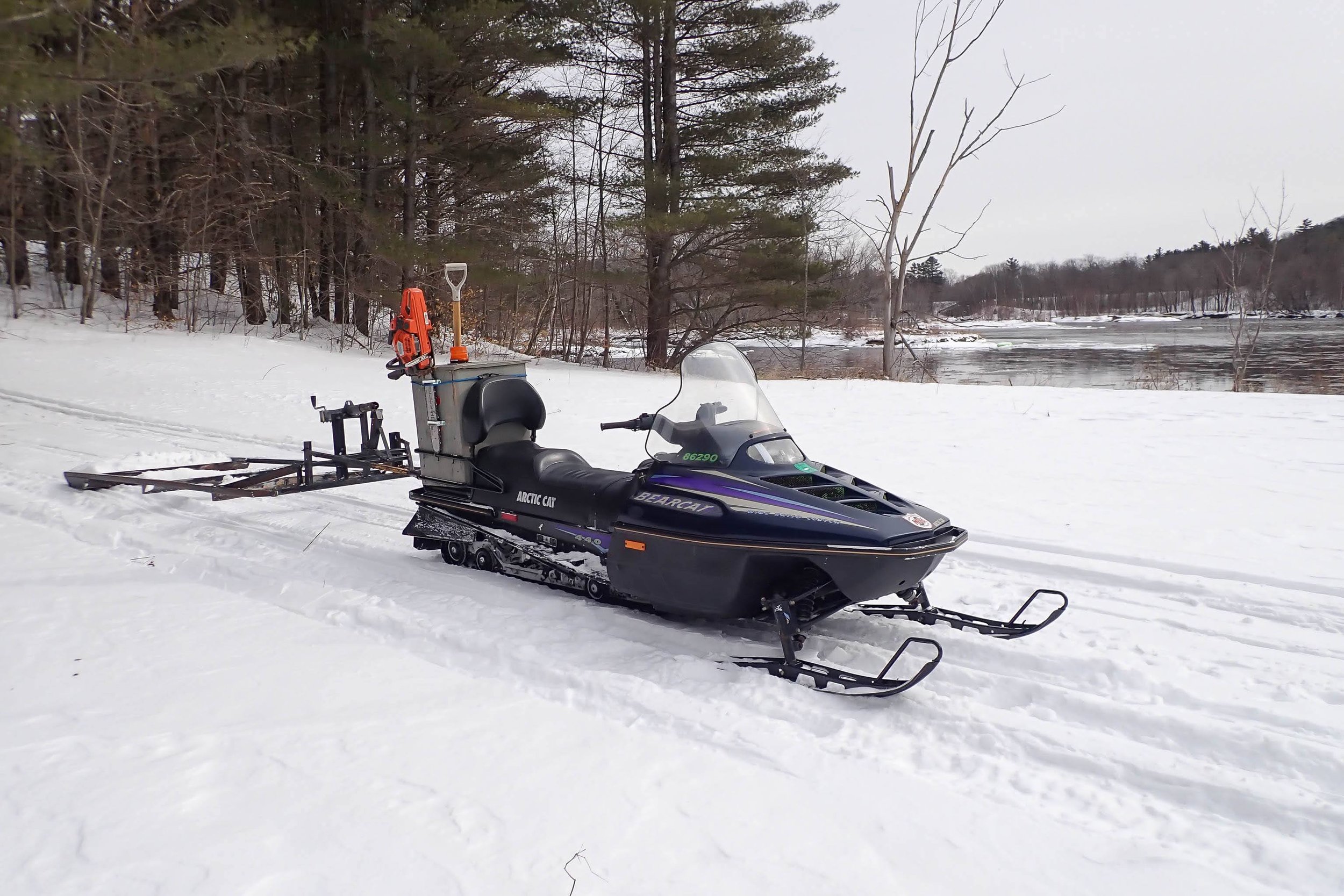Winter Trail Grooming - Maine Snowmobile Trails
Are you involved with a winter trail maintaining organization? Have you ever wondered what goes into preparing and grooming winter trails in Maine? The next few blog posts will be highlighting what goes into winter trail grooming. We are kicking it off with a guest post from the Wild River Riders, a snowmobile club based in Western Maine.
There are approximately 280 Maine Snowmobile Clubs affiliated with the Maine Snowmobile Association. Snowmobile trail development, construction, maintenance, grooming, etc. is funded through various mechanisms, such as: registration fees, club memberships, fundraisers, business sponsorships, various grants including state grants (many need a match), and a share of the state gasoline tax. Club volunteers dedicate a herculean amount of hours each year to clear, maintain, sign and groom trails and educate trail users.
We hope to leave you with an appreciation for what goes into making that beautiful white corduroy happen on the 14,000+ miles of mapped snowmobile trails here in Maine. These trails wouldn’t be possible without volunteers, landowner, municipality and club partnerships, and thoughtful trail users.
Thank you to the Wild River Riders volunteers (especially Carol Bourque and John Walker) for taking time to share their story, and for all their club does for their trails and community!
**Update 12/20/23: The Wild River Riders sent us a report from their initial trail inspections from the recent December flooding, and it reads: “A couple of bridges that were totally rebuilt after the May flooding have floated away, so we're back at square one. I hope your article will have a far reach because we will need lots of help to get trails open.”
—-——-——-——-———-—
The Wild River Riders maintains approximately 30 miles of snowmobile trails in the Gilead, Bethel, & West Bethel area. Our trails provide crucial links to other Western Maine snowmobile clubs, as well as to the trails in New Hampshire. We are a very small club so our trail grooming may differ from that of the larger clubs in the state who have more resources available. We operate a 1973 Tucker, a 1993 Tucker, and a 1998 Bearcat. This year we hope to put tracks on our 2013 Polaris Sportsman Big Boss and purchase a new drag for safer and better grooming on the north side of our trails.
Our club has a Head Groomer and a few assistant groomers. The state requires that any groomer operator pass a certification test, and our club has requirements for driving the groomers, such as required hours of trail work and training with the Head Groomer. Our Head Groomer works full time and fits in grooming time on nights and weekends. He primarily does the trails on the south side of the Androscoggin River. Two of our assistant groomers are retired and may go out during the day because our equipment is so old and unreliable that is safer for us to groom during daylight hours but only when temperatures are below freezing. The trails we groom with the old equipment are not heavily used, especially during weekdays. In a perfect world, we would groom after each snowstorm and before every weekend. We do our best to maintain safe trails.
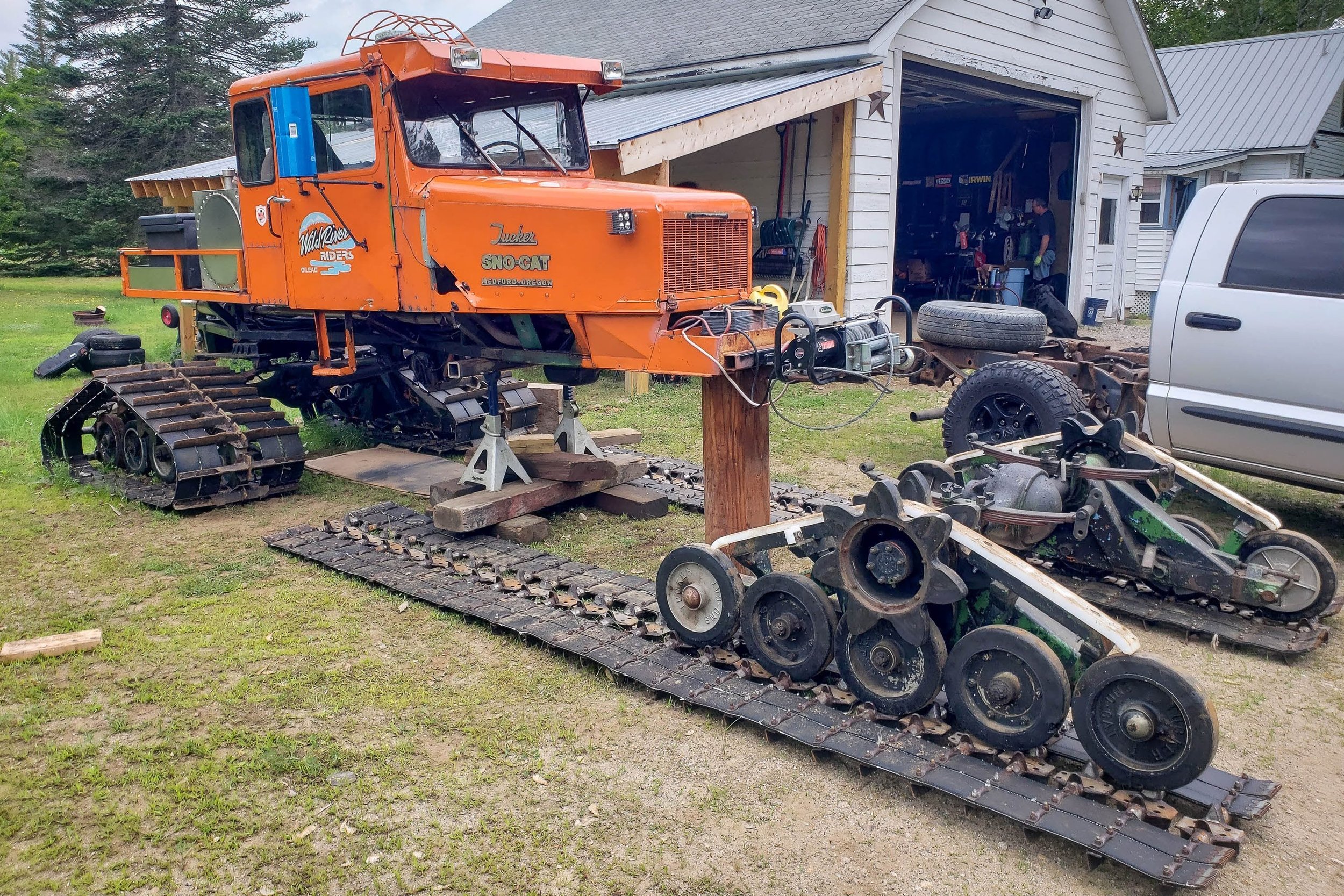

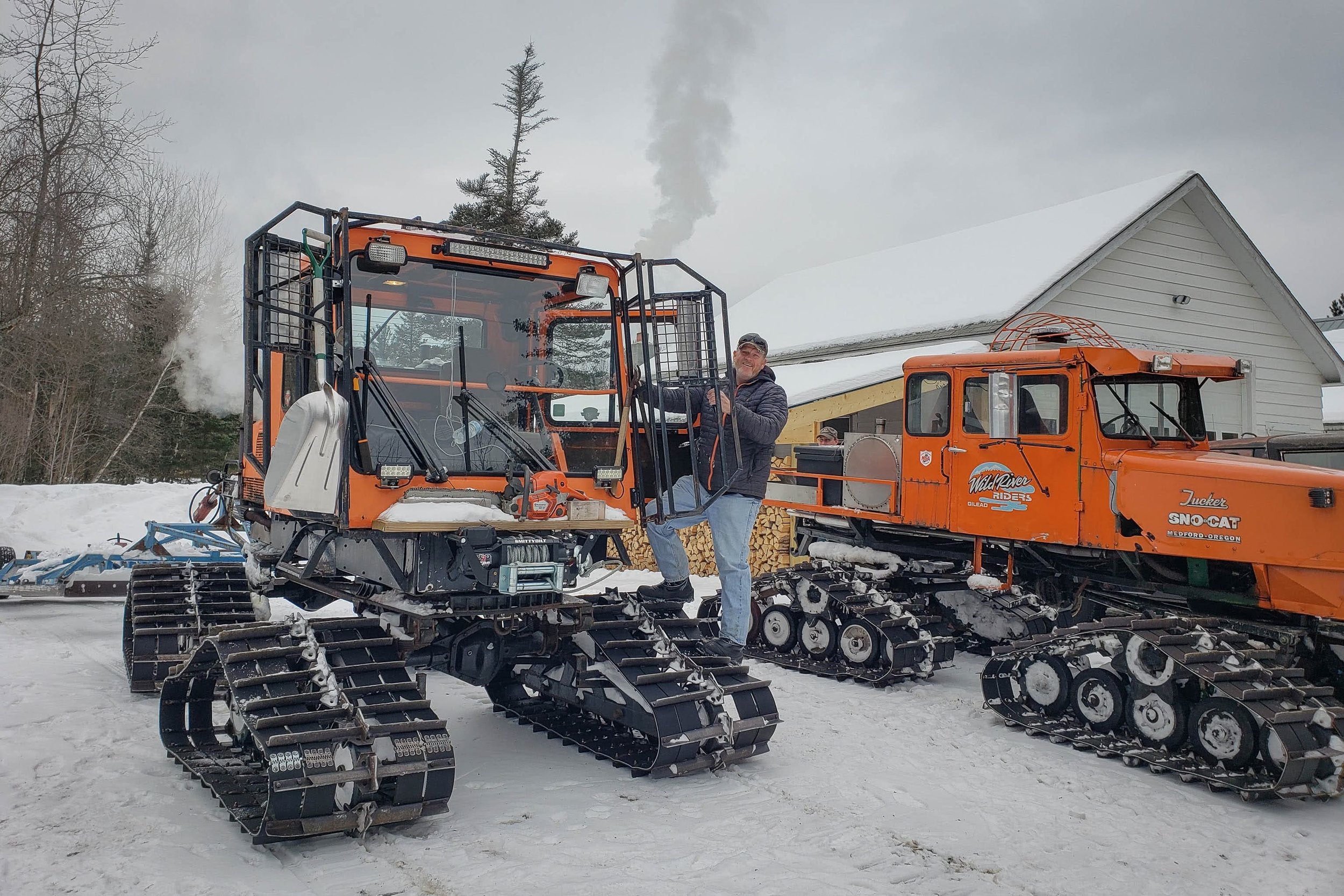
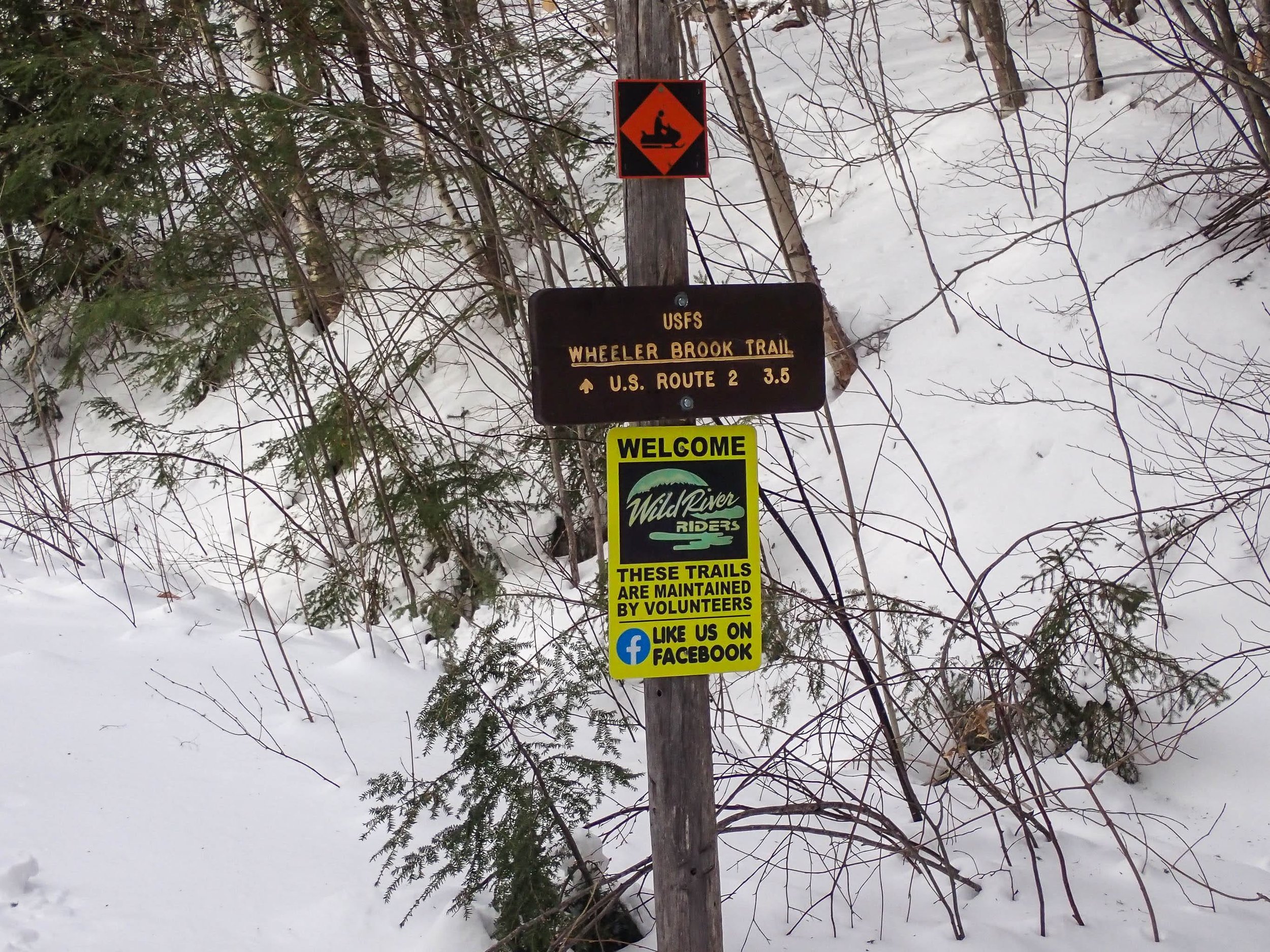
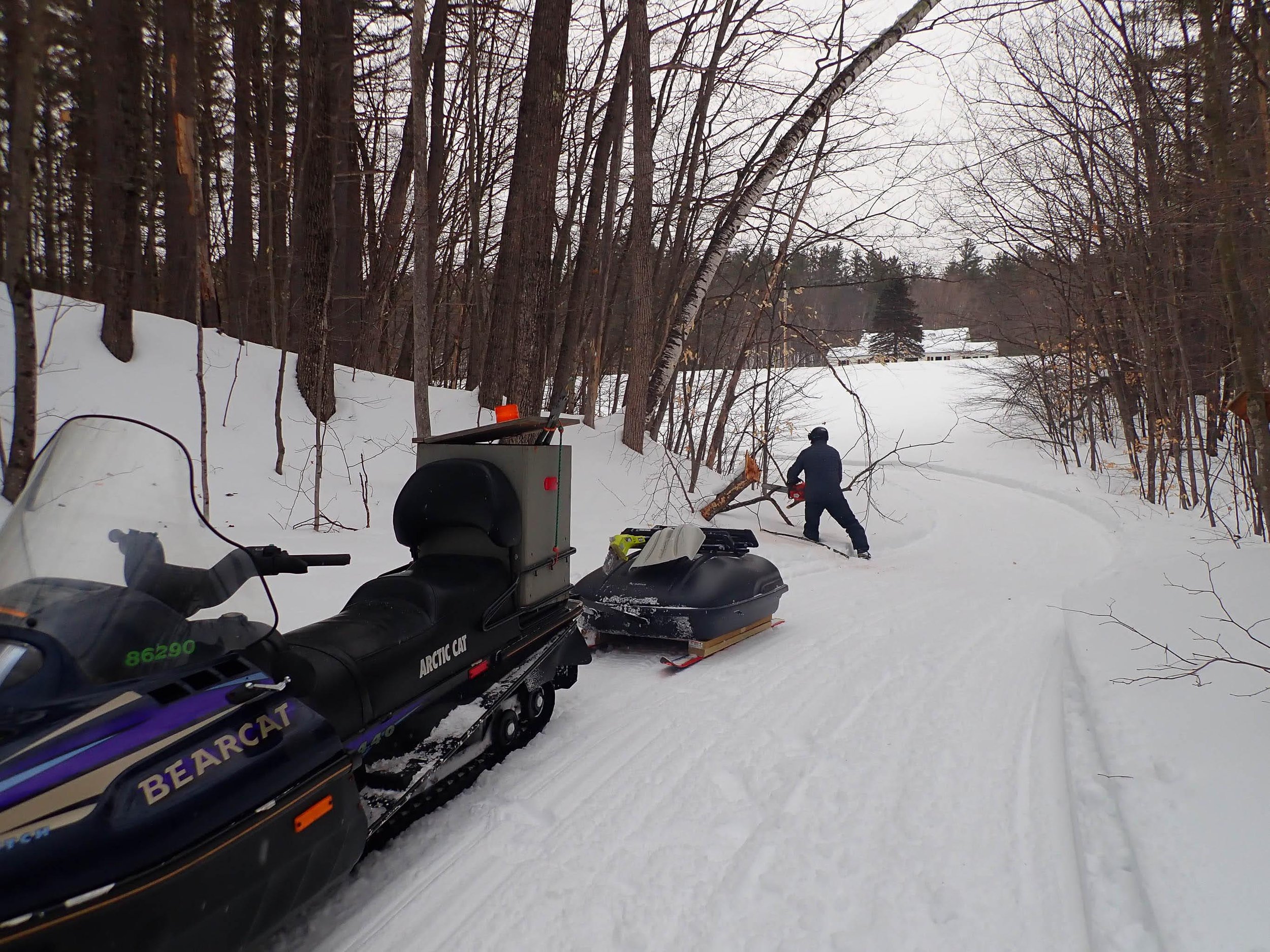
Our 30 miles of trails and grooming fleet are maintained by about four volunteers. Occasionally, we will have one or two people show up for a work day. Without the dedication of these volunteers, there would be no snowmobile trails in this area! From September to April, our club volunteers meet monthly, work with the State for grant money, use social media to attract members and volunteers, fix equipment, and maintain trails. We have almost 20 bridges along our network that are in constant need of repairs. They get broken by flooding rains or trucks and ATVs driving on them. Before we can send a groomer out, all bridges are inspected and repaired, blow downs are cut up and removed from the trail, trails are mowed with ATV and brush cutter, trails are trimmed with loppers and brush saws so the large Tuckers can fit down the trails. Some years we have to add culverts to low areas that flood or re-route trails due to changing landowners. Signage is added to the network per the state guidelines.
Our grooming equipment is old and in constant need of maintenance. Our Head Groomer inspects and maintains both Tuckers before the season begins. We make several trips to the local gas station to fill the tanks. Our assistant groomer maintains the Bearcat before the season begins.
Groomer in Training
The Bearcat
When the snow starts to fall, the Head Groomer and assistants discuss plans to open up the trails. Some trails can be panned with the Tuckers, while other trails need to be “sled groomed” before we can get the Bearcat on them. The first few grooms are slow, especially after a storm, because there are usually blowdowns to move out of the way. Snow and trail conditions dictate how long the process lasts, but the Tuckers poke along at about 5 mph so it takes a couple of days to get the whole network open and groomed. When the trails are icy, we need to winch the groomer up the hills, which is very time consuming.
In a good snow season, we can park one of the Tuckers at our park and ride, which shortens the distance for grooming out to the far end of our network. The groomer operator on the Bearcat needs to dismount at road crossings and shovel snowbanks. This is hard work, and we appreciate when our landowners assist by keeping the trail entrances open.
Most snowmobile clubs in the state are in the same boat. It’s hard to get volunteers when needed. Most of the club members volunteering are older, and the work is hard with a lot of heavy lifting. We would love for trail volunteers to follow our Facebook page and volunteer on work dates or just go out on the trails they love to ride with a set of loppers. Riders can also help by reporting problem areas directly to the club so we can address them promptly and keep our trails safe.
- Submitted by Carol Bourque, Wild River Riders
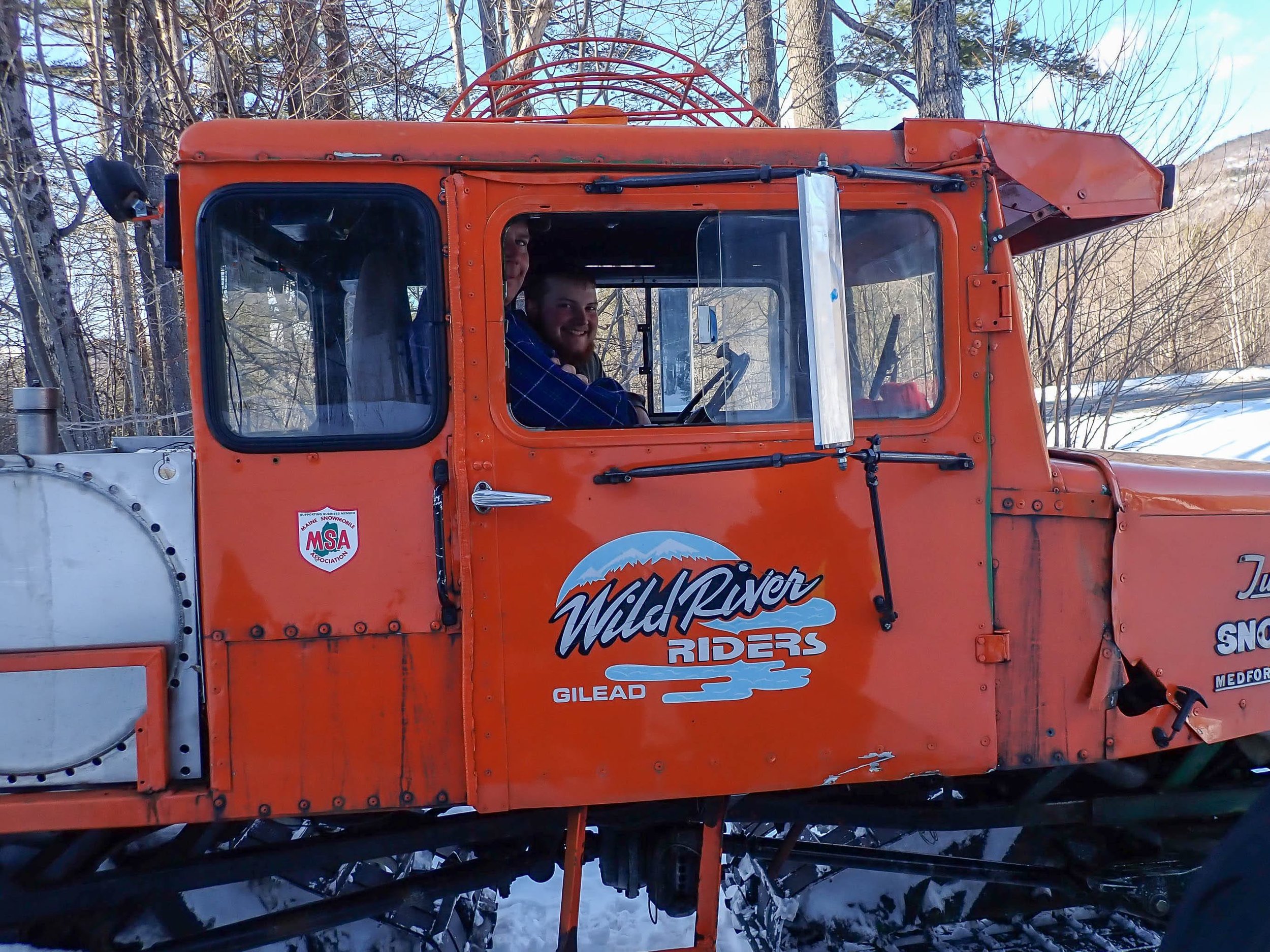
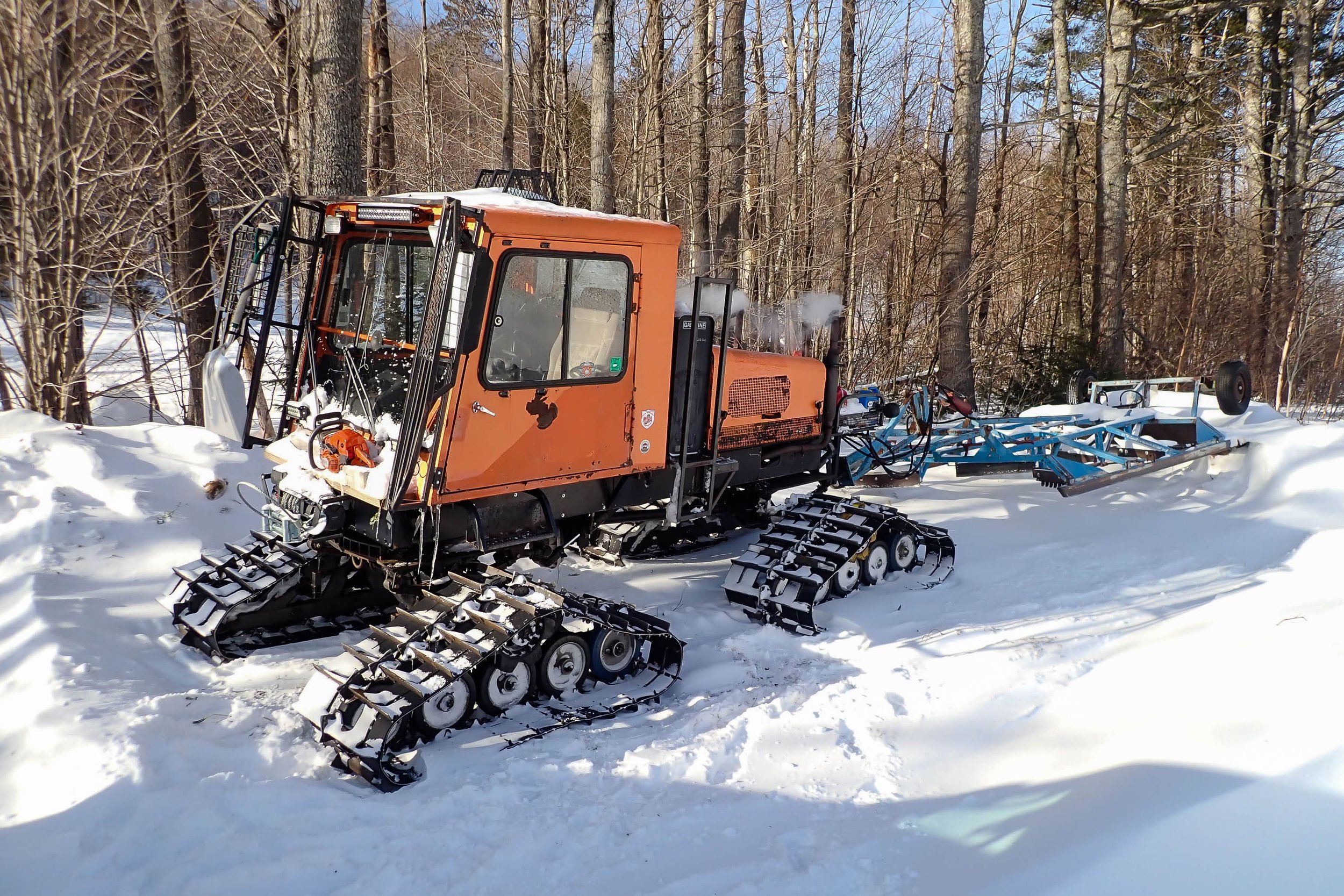
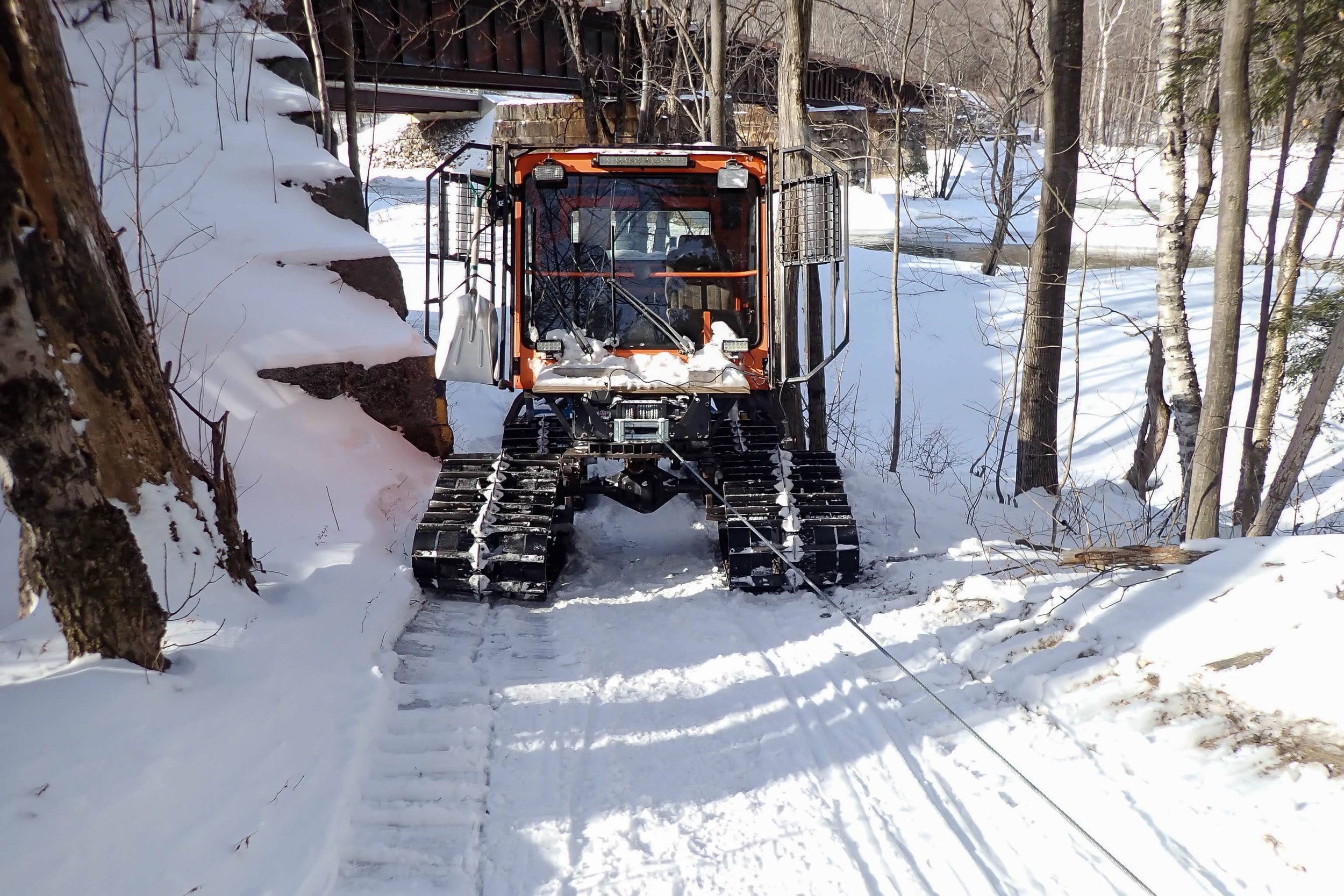
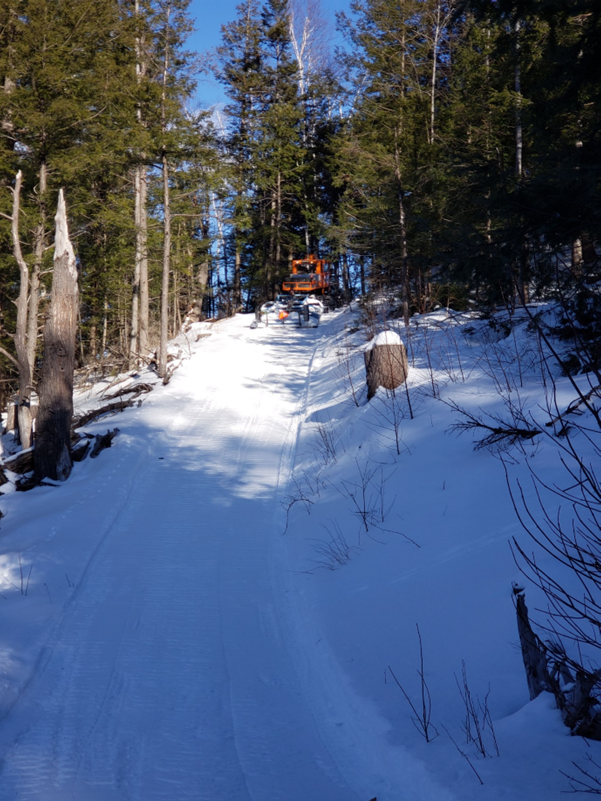
Photo captions: Still smiling after a long day, Warming it up at the Park and Ride lot, Winching up an icy hill, the White Carpet (groomed trail looking good)
> If you utilize trails maintained by snowmobile clubs, whether you snowmobile or not, please consider becoming a member or a volunteer for a snowmobile club near you.
> Some trails are designated shared-use, but not all trails are for all uses. Know before you go by brushing up on the maps, trail conditions, regulations, and trail etiquette for trails you plan to use. Respect, kindness and doing your research can go a long way in sustaining good relationships with landowners, volunteers and other trail users.
